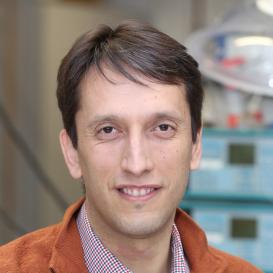Selected Publications
X. Moya and N. D. Mathur, “Caloric materials for cooling and heating”, Science 370, 797 (2020).
A. Aznar, P. Lloveras, J. Kim, E. Stern-Taulats, M. Barrio, J. Ll. Tamarit, C. F. Sánchez-Valdés, J. L. Sánchez Llamazares, N. D. Mathur, and X. Moya, “Giant and reversible inverse barocaloric effects near room temperature in ferromagnetic MnCoGeB0.03”, Advanced Materials 31, 1903577 (2019).
P. Lloveras, E. Stern-Taulats, M. Barrio, J.-Ll. Tamarit, S. Crossley, W. Li, V. Pomjakushin, A. Planes, Ll. Mañosa, N. D. Mathur and X. Moya, “Giant barocaloric effects at low pressure in ferrielectric ammonium sulphate”, Nature Communications 6, 8801 (2015).
X. Moya, E. Defay, V. Heine and N. D. Mathur, “Too cool to work”, Nature Physics 11, 202 (2015).
X. Moya, S. Kar-Narayan and N. D. Mathur, “Caloric materials near ferroic phase transitions”, Nature Materials 13, 439 (2014).
X. Moya, E. Stern-Taulats, S. Crossley, D. González-Alonso, S. Kar-Narayan, A. Planes, Ll. Mañosa and N. D. Mathur, “Giant electrocaloric strength in single-crystal BaTiO3”, Advanced Materials 25, 1360 (2013).
X. Moya, L. E. Hueso, F. Maccherozzi, A. I. Tovstolytkin, D. I. Podyalovskii, C. Ducati, L. C. Phillips, M. Ghidini, O. Hovorka, A. Berger, M. E. Vickers, E. Defay, S. S. Dhesi and N. D. Mathur, “Giant and reversible extrinsic magnetocaloric effects in La0.7Ca0.3MnO3 films due to strain”, Nature Materials 12, 52 (2013).

